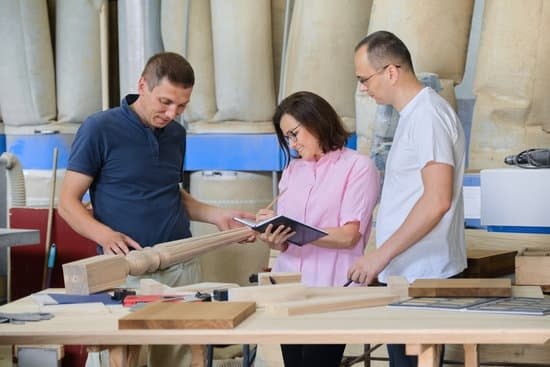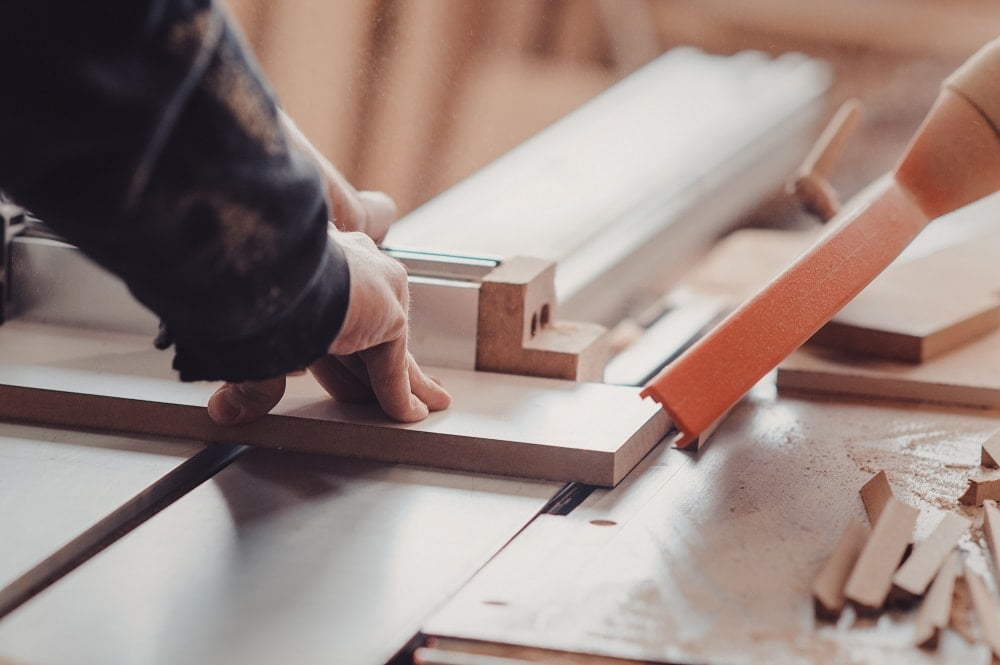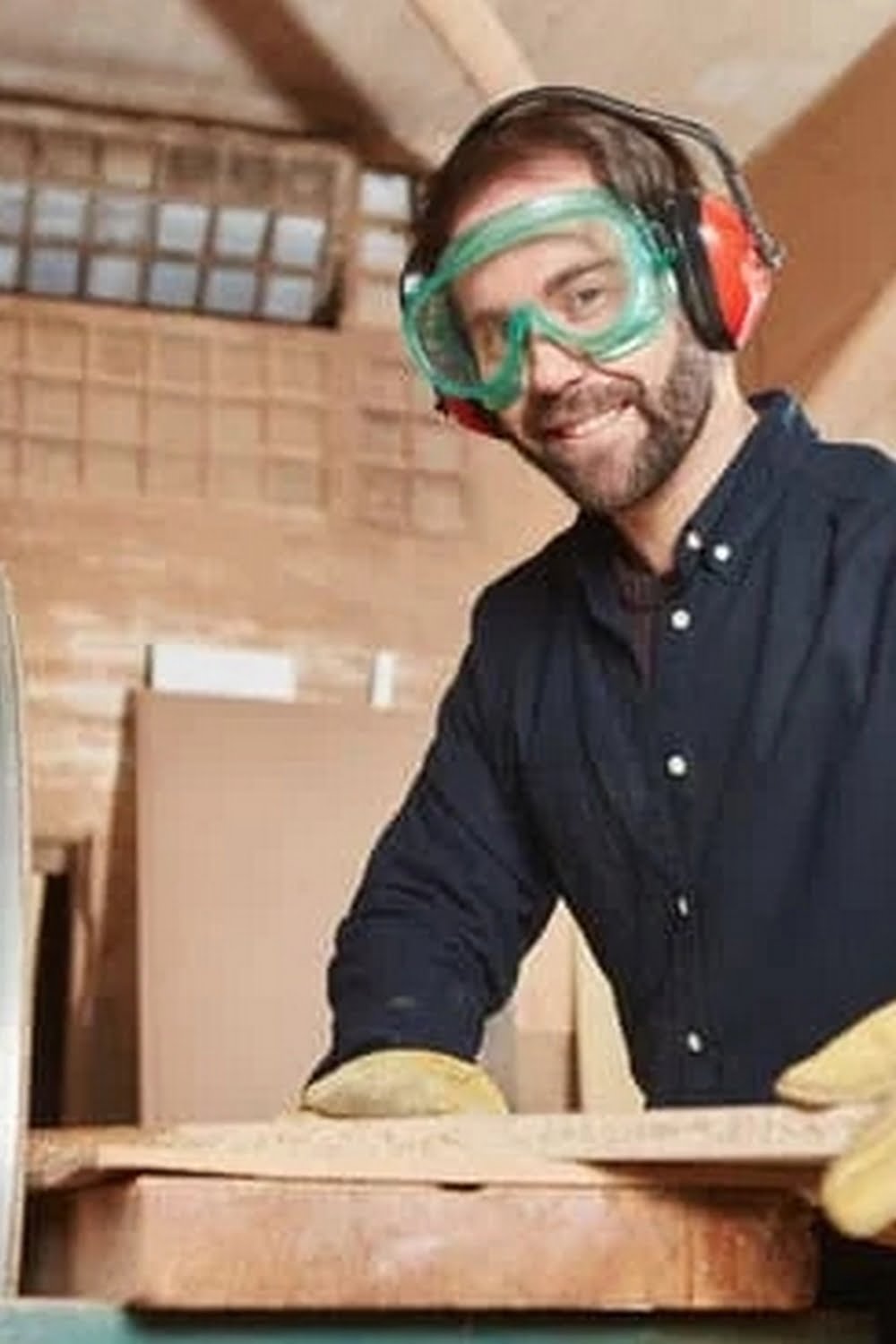Introduction
Advanced woodworking projects provide woodworkers with a unique and rewarding challenge. By taking on complex projects, woodworkers are able to push their own limits and develop their skills. There are a number of benefits associated with advanced woodworking projects, such as developing self-confidence, improving craftsmanship, creating unique items or furniture pieces, increasing knowledge, and expanding creativity. Advanced projects require the use of more intricate tools and methods than beginner projects and can result in professional-grade products that can be used in one’s own home or sold to others. While a beginner may feel intimidated by the complexity of advanced projects, they offer an opportunity to explore new approaches, materials, and techniques within the realm of woodworking. Once the basics have been learned and mastered through basic woodworking projects, embracing more complex woodworking tasks offers great potential for growth in craftsmanship, skill level, and variety of product types.
Essential Tools and Materials Needed
For advanced woodworking projects, you will need a selection of essential tools and materials. To begin, you will need the basics like: a good quality saw (such as a table saw, miter saw or circular saw), an appropriate drill bit, clamps that come in different sizes, sandpaper of varying grits for achieving the desired finish, chisels for carving and shaping wood pieces, hand tools such as screwdrivers and wrenches, router bits for making edge profiles and jointing wooden parts, drills for holes and countersinking screws, jigsaws for cutting curves and circles in wood, hammer for installation of nails/screws/hangers/hinges and various other hardware items. Additionally you may also require lumbers such as plain hardwood boards (pine or oak) or pre-cut softwood boards of different thicknesses to fashion your creations. You can purchase these items from any local hardware stores or online stores. Moreover you may also need specialty items tailored to the specifics of your intended wood project such as hardwood dowels to create furniture legs or exotic woods to cover exterior surfaces or build decks. Whatever your desired outcome, make sure to double check the list of necessary materials so as to complete your project with ease.
Types of Advanced Woodworking Projects
Furniture – Furniture projects such as tables, chairs, dressers, cabinets and other items involve working with larger pieces of wood, using intricate joinery techniques, chiseling details, and creating finishes in more depth. They are usually considered advanced projects and require a good deal of skill to complete successfully.
Sculptures – Sculpting in wood is challenging due to the fact that success depends on the artist’s ability to manipulate the material into unique shapes. Many of these projects can involve carving intricate designs with sharp chisels or power tools that require a very steady hand.
Custom Fixtures – Making custom fixtures like mantles, fireplace surrounds, door frames or even floorboards is another type of advanced woodworking project that deals primarily with the design aspect resulting in a one-of-a-kind item. This type of project typically requires an experienced craftsman to measure twice cut once as any mistakes could be costly when executing precision cuts like mitering joints or tapering legs.
Toymaking – Toymaking or carving small wooden figures by hand falls into the same level of difficulty as other types of advanced woodworking because it requires specific tool control for cutting and finishing details which can be time consuming. The main difference between making dolls or miniatures and other objects is scale; small toys often have much finer details which require extra special attention.
Techniques and Strategies
Advanced woodworking projects require a much greater level of technical skill and familiarity than beginner projects. Advanced woodworking projects also typically involve more complex tools, materials, and techniques that require detailed knowledge of how these items interact. When tackling an advanced woodworking project, it is important to have a plan in place for what techniques and strategies you want to use, as well as the associated time frames needed for each.
Common advanced woodworking techniques include cutting difficult angles at precise intervals and with smooth finishes, reinforcing joints on load-bearing frames with reinforcements like biscuits or splines, creating detailed joinery such as dovetails or mortise-and-tenon joints, and finishing complex surfaces from scratch. With each project requiring different materials and techniques, it is essential to understand what type of project you will be working on before getting started.
Once the purpose of the project has been identified, the approach must be tailored accordingly. If a project requires high levels of accuracy like cabinets or furniture pieces, consider using power tools over hand tools for increased velocity in production. If construction speed isn’t paramount but precision is desired for intricate details like inlays or joinery work, then spend some extra time configuring hand planes and chisels to minimize sanding tasks later on. Finally certain finishing touches such as coloring or including hardware may take longer if they not sourced ready-made.
It is also important to remember when considering any advanced woodworking project that accuracy beats speed when it comes down to producing quality work so work carefully – one mistake can affect the entirety of your creation! Allow yourself adequate lead time if you are unsure of a particular technique or tool – practice on scraps first before committing – because sometimes things just don’t turn out exactly as expected even with preparation! Good luck!
How to Get Started on a Project
Before starting on your beginner to advanced woodworking project, it’s important to have a plan. Establishing accurate measurements and drawings is the first step in creating any successful project. You can begin by drawing out your project ideas on paper or using a computer program for sketching purposes. This will help determine the exact materials you’ll need as well as the proper sequence of steps for completing the build. Additionally, it’s also advisable to write out detailed instructions or patterns that cover everything from cutting to combining pieces. Instructions should be as clear and easy-to-follow as possible so that both novice and experienced amateur woodworkers can achieve success when constructing your design. When planning ahead, always take into consideration wood sizes and appropriate joinery types; select screws, nails, and glue with care; think about how to best secure pieces together; consider finishing options such as paint or varnish; research quality tools that fit within your budget; and measure twice before cutting once! With careful preparation and thoughtful decisions along the way, any beginner advanced woodworking project is capable of producing lasting results with great accuracy!
Tips and Tricks
Beginner Woodworking Projects:
1. Building a birdhouse ” A great starter project for those just learning how to build with wood! It can be done safely with simple tools and isn’t overly complicated. Depending on the size of the house, it can take anywhere from a few hours to a day to complete.
2. Making a cutting board ” Cutting boards are necessary items in any kitchen, and they make great practice projects for honing techniques like joinery and sanding. Given that it’s an easy-to-make item, you can get creative with colors, shapes, sizes, etc.
3. Making your own furniture ” Depending on the type of furniture you plan on making (table, chair or bed), there will be different design considerations. However most require basic woodworking skills such as joinery and wood shaping”both are much easier than they might seem at first glance!
Advanced Woodworking Projects:
1. Design & make cabinets ” Cabinets offer plenty of opportunities for creativity when it comes to design and construction as well as working with finishes like trim and staining/painting them. This is no walk in the park though”a beginner should seek help from more experienced woodworkers before embarking on this tricky task!
2. Build a rocking chair ” Rocking chairs may look primitive but actually require advanced skills like steam bending for the curves and carving for finer details like seat slats or armrests. As an addition, you can also add upholstery to increase comfort levels!
3. Making a wooden clock ” Clockmaking is incredibly complex but also incredibly rewarding if done right; think about all the small parts coming together to tell time accurately! You’ll need specialized knowledge here, such as understanding gear ratios and rotational force so get ready to study up hard if this is the project you choose!
Common Problems
Common problems with advanced woodworking projects include choosing the wrong type of wood for the project; inaccurate measurements of lumber width, thickness, and length; incorrect jig setup; and inadequate power tools for the task. All these issues can lead to time-consuming mistakes and frustration.
Safety should also be a key consideration when taking on more advanced projects. Always make sure that you have personal protective equipment such as safety goggles, hearing protection, dust masks and appropriate clothing worn prior to engaging in any woodworking activity. Additionally, if using power tools or larger machinery ensure that it is properly maintained and is being used as per instructions. Make sure all safety guards are in place at all times and always unplug or disconnect a tool before performing maintenance work or adjustments. Any large protruding nails or screws should be immediately removed to prevent any injuries during work operations. And finally, always attach auxiliary devices such as feather boards due to their important role of helping keep pieces stable during cuts as well as preventing kick backs from other tools.
Finishing Off Your Project
One of the final steps of completing any advanced woodworking project is finishing. That’s because a proper finish does more than just protect the wood from damage; it also enhances its visual appeal. The most common finishes for wood are oil-based varnishes, water-based lacquers, and waxes, but there are a few other options out there worth considering as well, depending on the project you’re working on. Here are some ideas for protecting and presenting your woodworking projects:
Oil-Based Varnish ” An oil-based varnish is applied with a natural bristle brush, typically in two thin coats to provide durability and protection for all sorts of woods including softer types like pine or cedar. This type of finish gives the project an attractive gloss that will deepen as time passes.
Water-Based Lacquer ” Water-based lacquer dries quickly and can be used with all types of woods. It goes on smoothly and provides excellent protection against water, abrasions, and regular wear and tear in general. However, if you choose this option you must take caution when applying it to porous wood as incomplete sealing will occur unless special precautions are taken.
Wax ” A good quality furniture wax is best for unfinished woods such as oak since it preserves the natural appearance while providing some protection against dust and fingerprints. It can be applied with a cloth or applicator pad in multiple layers to build up the desired level of shine while allowing underlying grain pattern to show through.
Shellac ” Shellac has been used in furniture making since the 16th century due to its high gloss finish that comes without having to resort to staining or painting (which can spoil the look). It provides relatively good protection against abrasion but not liquid spills so must be applied carefully around areas at risk of moisture damage such as edges or table tops.
Polyurethane ” Polyurethane finishes offer supreme resistance against abrasion, water damage, general wear and tear”and in many cases chemicals too! This hard wearing sealant is available in both an oil form that needs cleaning after application but stronger fast drying acrylic versions that don’t require this extra step. When correctly applied polyurethane gives off a beautiful glossy sheen that helps bring out the beauty within even hardwood species such as walnut or mahogany
Resources
Beginner Advanced Woodworking Projects
Tools – Beginners may find success in starting with basic tools such as a chisel, hand saw, sander, drill and screwdriver. More advanced projects require more specialized tools such as a table saw, router router bits, lathe, joiner, band saw, claw hammer and its various heads.
Materials – While wood is the most common material used for woodworking projects, other materials that may be used include aluminum and plastic. Experienced woodworkers may opt to specialist materials such as exotic woods or reclaimed boards. For some projects select higher-grade lumber for added strength and durability.
Online Tutorials – There are plenty of online tutorials available for beginner to advanced projects ranging from making simple cutting boards to more detailed cabinetry designs. These tutorials walk through each step while teaching the basics of construction techniques and even provide helpful tips on finishing touches.
Local Woodworking Clubs – Joining a local woodworking club is a great way to connect with fellow enthusiasts and get help when tackling more challenging tasks throughout your project building process. Many clubs offer workshops on different techniques that can inspire new ideas or answer questions you may have along the way.. Often clubs will have members willing to share their own experience or you can rent out tools if needed too.
Conclusion
Beginner and advanced woodworking projects can both provide a stimulating way to invest your time. Beginner projects are an excellent way to learn the fundamentals of the craft. Not only do you gain valuable experience, but you can also make a practical item for yourself or someone else! Advanced woodworking projects take skill and more technical knowledge, and they help perfect the techniques you have already learned. No matter what level you’re at, there is something out there for every type of person”just know where to look!
If you’re just starting out in woodworking, there are plenty of resources online that can help guide you on the right path. Most home improvement stores may even offer classes or workshops to teach basic skills around common tools and materials. There are even likely local organizations dedicated specifically to woodworking in your area if you’d like a more hands-on approach. Once your basics are polished, don’t forget about all of the fantastic websites available offering colorful diagrams and instructional videos on countless projects. From here, it’s up to you how far down the rabbit hole of infinite creativity and ingenuity you want to go!
In conclusion, whether you are just getting started or wanting some inspiration from those who have been doing this craft for many years, there is something out there for everyone in the world of woodworking! From beginner level simple designs through highly advanced plans for creating one-of-a-kind keepsakes or functional furniture pieces; having knowledge in how things come together as well as being able to recognize great workmanship will be beneficial in any endeavor. Good luck as your sawdust trail moves forward!

Hi everyone! I’m a woodworker and blogger, and this is my woodworking blog. In my blog, I share tips and tricks for woodworkers of all skill levels, as well as project ideas that you can try yourself.





